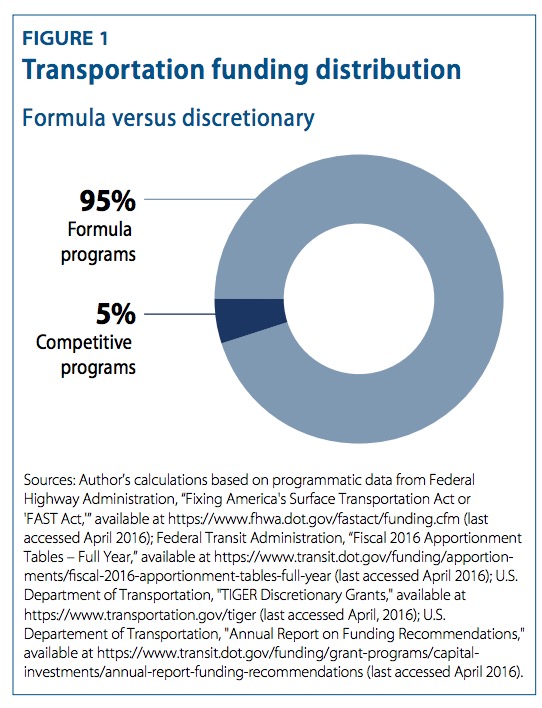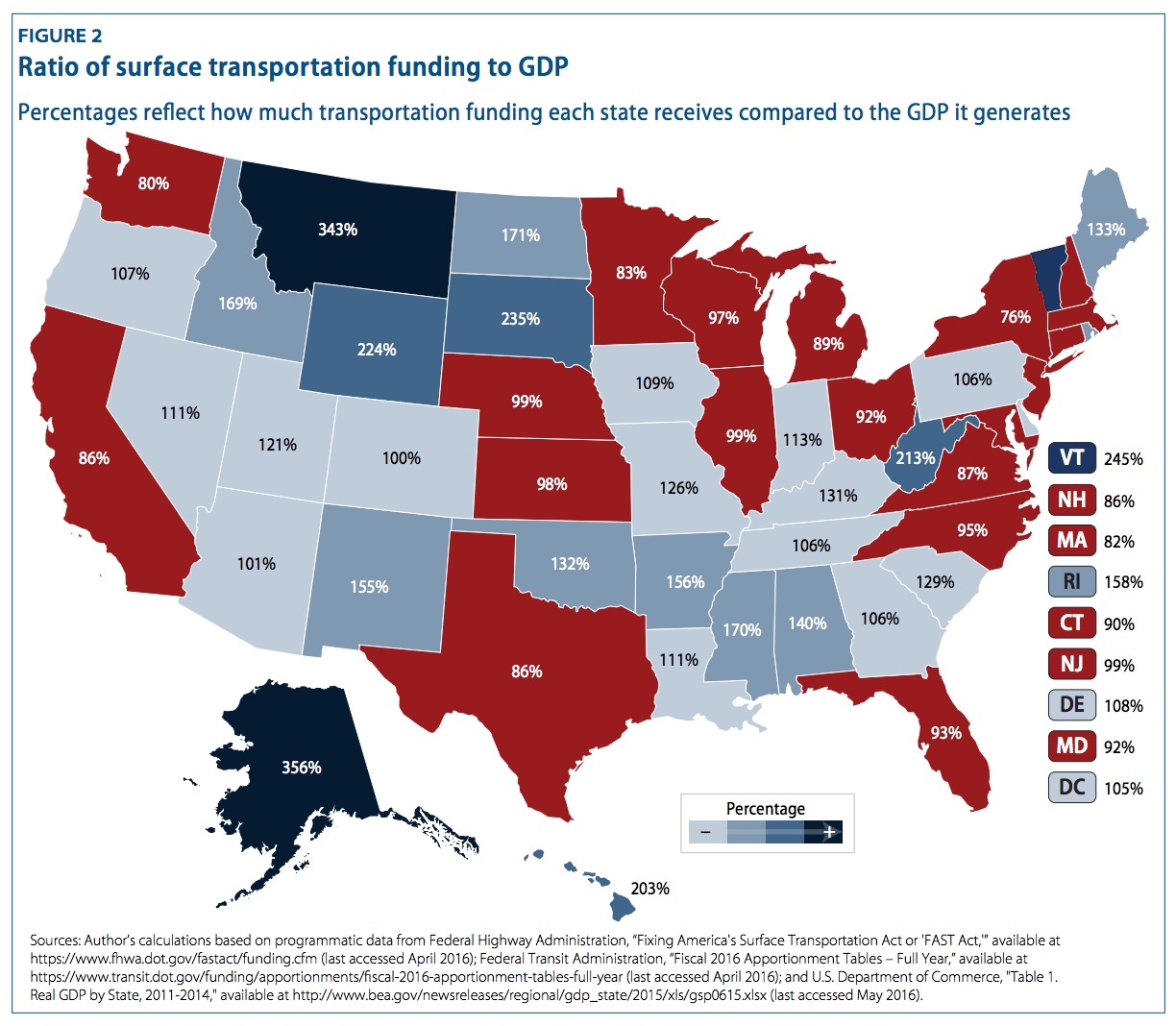CENTER FOR AMERICAN PROGRESS
By Kevin DeGood, Christian Weller, and Andrew Schwartz
Introduction and summary
Rhetoric is a poor substitute for action, and we have trusted only to rhetoric. If we are really to be a great nation, we must not merely talk; we must act big.
-Theodore Roosevelt
The legitimate object of government is to do for a community of people whatever they need to have done, but cannot do at all, or cannot so well do, for themselves—in their separate, and individual capacities.
-Abraham Lincoln
 Infrastructure is the foundation that makes everything in the U.S. economy possible. Infrastructure is also essential to our national competitiveness. When done right, infrastructure investments produce broad-based prosperity for American businesses and workers, facilitating social mobility and enabling access to opportunities, people, and ideas.
Infrastructure is the foundation that makes everything in the U.S. economy possible. Infrastructure is also essential to our national competitiveness. When done right, infrastructure investments produce broad-based prosperity for American businesses and workers, facilitating social mobility and enabling access to opportunities, people, and ideas.
At every stage in our national development, infrastructure has played an essential role. Yet, today, many of our most valuable and productive national assets are coming to the end of their useful life and are in need of major repairs or reconstruction. Moreover, our growing population will require system expansion. For too long we have ignored the rising backlog of maintenance, preferring a reactive, patchwork approach that struggles to respond when critical systems fail—often without warning. That is why it is time to build the next generation of American infrastructure that will power our economy in the 21st century.
The need for investment is overwhelming. According to the American Society of Civil Engineers, American infrastructure across all sectors needs more than $3 trillion in investment to both bring systems up to a state of good repair and accommodate population growth.
In order to advance effective infrastructure policy that addresses current concerns and meets future needs, Congress should take the following three steps:
1. Increase annual federal expenditures across infrastructure sectors by a total of $500 billion over 10 years—fiscal year 2017 to FY 2026—through a combination of increased user fees and tax code changes to raise general fund revenues
2. Establish a national infrastructure investment authority, or NIIA, to provide competitive grant funds, low-cost financing, and expedited environmental review and permitting for infrastructure projects of regional or national significance
3. Reform federal infrastructure programs to increase accountability and ensure that each dollar produces the greatest possible social, environmental, and economic return on investment
The concrete and steel that make up infrastructure projects are prosaic elements of our daily lives. However, they reflect the deeply American tradition of always looking to the future and making thoughtful investments that will pay dividends for generations to come. Taken together, the investments detailed in this report will serve as a significant down payment on America’s continued economic prosperity. Moreover, investing in infrastructure will provide for more strong, middle-class jobs capable of supporting a family, with money left over to save for the future. Finally, the policy reforms will address many of the shortcomings of existing programs, ensuring that increased federal outlays are well spent.
Now is the time to put rhetoric aside and act big.
How infrastructure shapes our nation
Throughout U.S. history, major infrastructure investments have shaped our society, fueled economic growth, and raised standards of living. In the early 19th century, the Erie and Ohio canal systems helped to open up the interior of the country, fueling population growth while expanding trade and development. Prior to their completion, the movement of goods and agricultural commodities was largely relegated to trails, underdeveloped roads, and coastal navigation. The efficiency gains from canal construction were significant. For instance, when compared to a horse, a single canal barge could transport 240 times the cargo weight. Freight costs fell by as much as 90 percent compared to ox- or horse-drawn wagon. The canal system was such a powerful force that it also shaped settlement patterns. For example, to this day, nearly 80 percent up upstate New York’s population lives within 25 miles of the Erie Canal, which stretches 365 miles from Albany to Buffalo. The Erie Canal also made the port in New York City the busiest in the country, spurring the growth of related sectors such as manufacturing, finance, and insurance.
In the late 19th century, the transcontinental railroad tied a vast continent together. Prior to its completion, a cross-country trip by stagecoach cost $1,000 and took five to six months. According to the Federal Reserve Bank of Minneapolis, $1 in 1850 is worth approximately $28.45 in 2015. In other words, a transcontinental trip by wagon cost the equivalent of roughly $28,000. In the 1860s, a second-class ticket on the Central Pacific Railroad from Chicago to San Francisco cost only $45. When adjusting for inflation this translates to $1,280 in 2015 dollars—roughly 22 times cheaper than an equivalent trip by wagon. In 1956, President Dwight D. Eisenhower signed the Federal-Aid Highway Act into law. This groundbreaking legislation initiated the construction of the largest public works program in U.S. history. President Eisenhower succinctly summarized the national project, saying, “Together, the united forces of our communication and transportation systems are dynamic elements in the very name we bear – United States. Without them, we would be a mere alliance of many separate parts.” The 1956 Highway Act envisioned a seamless network of highways that would efficiently link urban and rural areas, ensuring connectivity and spurring economic growth. Flash forward more than six decades, and the interstate construction program initiated by Eisenhower has been so successful that it is scarcely possible to image the United States without these facilities.
The time has come for a proactive approach to investing that looks to the future, correcting mistakes from the past and directing funds to projects that will power our economy in the 21st century. In the absence of robust investment and a vision for America’s future growth and development, existing systems will further deteriorate, leading to more congestion, pollution, and lost productivity, among other challenges.
Download full version (PDF): An Infrastructure Plan for America
About the Center for American Progress
https://www.americanprogress.org
The Center for American Progress is an independent nonpartisan policy institute that is dedicated to improving the lives of all Americans, through bold, progressive ideas, as well as strong leadership and concerted action. Our aim is not just to change the conversation, but to change the country.
Tags: CAP, Center for American Progress, Federal Funding, Federal Investment







 RSS Feed
RSS Feed